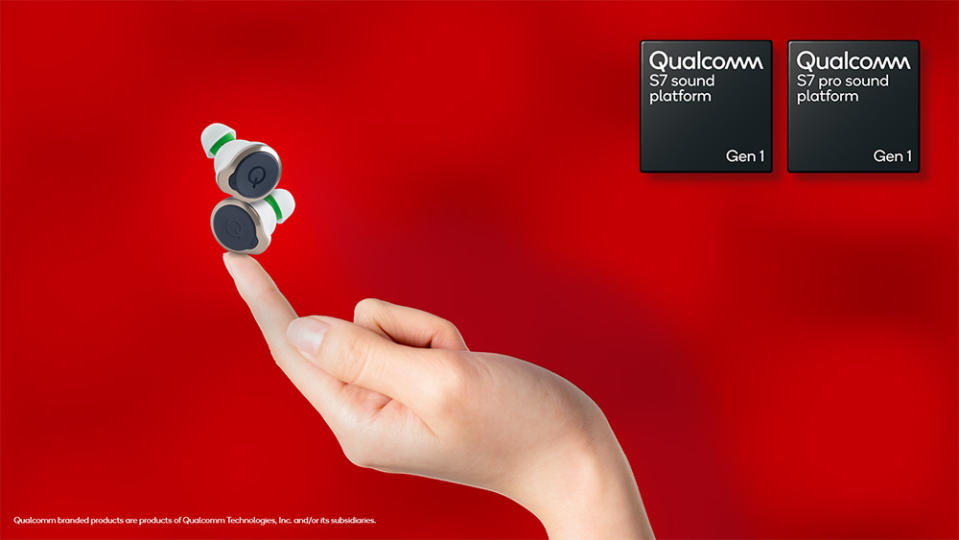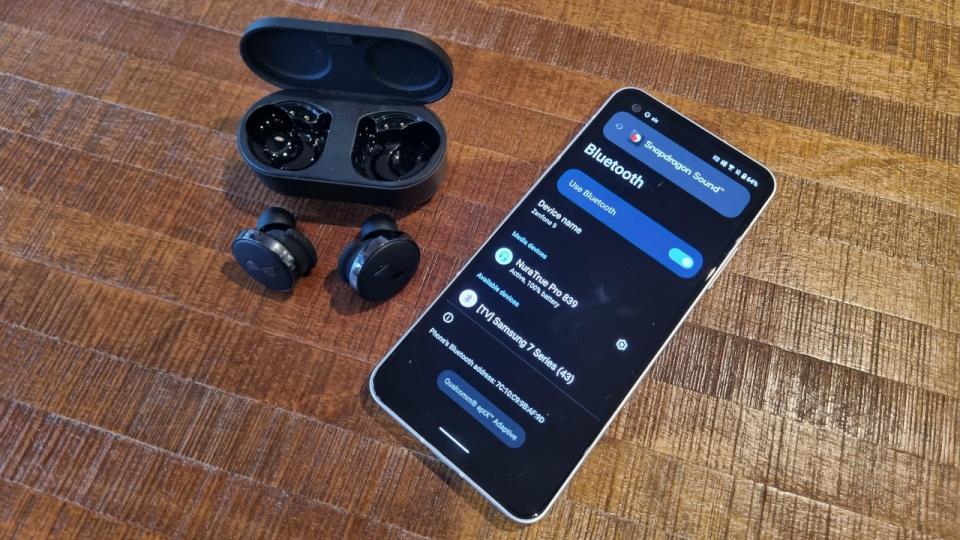Wi-fi for headphones is great news for sound quality, so is it the death knell for Bluetooth?

You don’t need me to tell you how the internet has opened up a world of possibilities. We're living in an era of space-based satellites and virtual hospitals, for heaven’s sake. Internet access is in our homes, phones, TVs and, in the case of the most connected (arguably eccentric!) population, perhaps toilets, toasters and (presuming anyone has bought them) diapers and cat litter trays.
So it was always going to be only a matter of time before it hit headphones, despite their inherent portability and predominant use outside wi-fi’s biggest hub (the home). It’s for that portability reason that we didn’t really expect the internet to infiltrate the portable wireless speaker market when it did; but then in came the Sonos Bluetooth/wi-fi hybrid Roam and Move. And such an implementation is seemingly also what's coming for wireless headphones.
The possibility of future wi-fi-supporting headphones has stolen a few headlines in recent years, with MQA, PSB and hearables start-up Sonical promising to deliver a wi-fi-toting pair next year via ultra-wideband (UWB) technology, and Sonos and Apple (never far from consumer tech hearsay) rumoured to be looking into similar propositions as Bluetooth alternatives. Qualcomm has just announced that its latest flagship audio platform for headphones (the S7 Pro Gen 1) supports wi-fi implementation and will begin appearing in pairs next year too.
The sonic advantage: greater bandwidth
There are some obvious advantages to wi-fi hopping aboard headphones in hybrid fashion alongside Bluetooth, from the greater range and stability it will offer to the much bigger bandwidth capability it has.
On that latter point, the audiophiles in us want to hope for the best when it comes to the sonic improvements it could bring. After all, wi-fi technology’s significantly greater bandwidth than even the best Bluetooth solution means that high-resolution and thus high-quality (i.e. large!) files and streams can be passed through a device chain easily without detrimental compression. "What you'll be able to do with wi-fi," says Qualcomm's Dino Bekis, "is be able to have a step-function in terms of throughput and latency improvement. So we’ve now announced 24-bit/96kHz – true lossless audio. Just from a raw data rate perspective, you're not going to be able to get true lossless audio out of Bluetooth."
It's something music streamers and wireless speakers (any networked audio component really) already deliver over wi-fi connections, of course. And will this opportunity to improve audio be limited to the home? Not necessarily, providing hotspotting with a phone isn't too impractical or data-hogging, though Bluetooth can of course step in for environments out of network range.
The aforementioned trio collaborative will no doubt have sound quality high on its list of priorities through PSB’s audio engineering expertise and MQA’s SLC6 technology, while Qualcomm’s audio platform will offer headphone manufacturers the opportunity to facilitate 24-bit/96kHz audio passthrough over wi-fi courtesy of its XPAN (Expanded Area Network) technology.
It’s important to remember that the hardware itself will have to be good (read: transparent) enough for hi-res transmission to make sense – there’s little point in 24-bit/96kHz passthrough if the hardware isn't mature enough to reveal those extra details offered by such a hi-res file/stream. A pair of well-engineered, premium over-ear wireless headphones may well be revealing enough, but will everyday earbuds? Unlikely. Still, they will benefit from the extra range, other audio (spatial or multi-channel, say) that requires big data rates, and any wi-fi-powered AI features.

And the practical ones: freedom from your phone
To go back to an earlier point, you might think 'wi-fi' and 'headphones' don't go hand in hand – headphones are predominantly used out and about, and wi-fi isn't exactly lacing every street. That's one of the reasons wi-fi will be supported alongside, rather than instead of, Bluetooth, of course. But one practical advantage it has over Bluetooth is greater range – how a wi-fi connection won't tether you and your headphones to your phone (or other source device).
"So you can have a direct connection between the phone and earbud that follows the same paradigm as what you have today with Bluetooth," explains Bekis. "But I think that the real breakthrough – because people have mesh networks, whether it's an enterprise or in a home – is the ability to go anywhere in the home or anywhere in the building.
"On the [wi-fi-enabled] Qualcomm campus, there's nothing that says I can't leave my phone in my office when I’m on a call [through earbuds]. I can go to the cafeteria to get a salad, and then come back to my office, never having the phone in my hand but being on the call the whole time."
The phone will primarily be a necessary control device, and one supporting Qualcomm's new Snapdragon 8 Gen 3 chip is necessary to unlock the wi-fi connectivity over the first wave of compatible headphones anyway. But how about taking the phone out of the equation altogether? That's the next step, according to Bekis: "The bigger idea for us long-term, and a path we're still marching down, is ‘why do you need to connect to any device when I can just connect to the cloud?'.
If you have wi-fi built into your earbuds, it has an access point into a cloud service. So then you have Spotify, Amazon Music or whatever you like streaming directly [to them]. Because they have an IP address, the same way your phone does. The issue is perhaps more about the control plane, though you can use voice assistant to change tracks. Or taps, or whatever manufacturers may think of! So that's the next generation, the capability is there in the chipset."
One of the inherent impracticalities of wireless headphones – anything powered by rechargeable batteries – is that they have a 'battery life', even if this is an area that is improving all the time. Now, streaming high-res audio over wi-fi sounds rather power-hungry, don't you think? But Qualcomm says its execution on the S7 Pro Gen 1 chip doesn't actually affect battery life.
"Rewind the clock back to 2007 when Apple launched their iPhone, with wi-fi on a smartphone for the first time, and people said, ‘why do I need that?’, recalls Bekis. "Now, I don't think anyone questions that!"
"With GPS, you only turned it on when you needed it because it drew a lot of power; you only turned the wi-fi on when you needed it because it also consumed battery life. But that went away. No one thinks about that – every radio is on continuously on in your smartphone. So how do we do that on the earbud? With a phone, you're talking about something that has maybe a 1500 or 2000mAh battery, but an earbud has a 60 or 80mAh one. [Headphones typically have batteries two to three times bigger.]
"You have to fundamentally redesign the guts, the core, of that wi-fi chip. So we've been able to figure out a way to do that. It's a really unique innovation and 100 per cent standards compliant."
Qualcomm's Sarah McMurray explains that the team carried out a couple of internal tests, in which 16-bit/44.1kHz audio over Bluetooth could be streamed losslessly for 10 hours... and 24-bit/96kHz audio over wi-fi could also be streamed for 10 hours. "That’s the breakthrough," she says. "You can get the same experience and no compromise on battery life."

But will it open Pandora’s box?
But going back to the AI opportunities that wi-fi opens up, will there be distractions away from sound quality – not necessarily from every headphone manufacturer; we will always, thank goodness, have those that prioritise sound quality – but generally speaking? Because wi-fi headphones are poised to become more than vehicles for music listening as they become increasingly integrated into our daily lives – for work calls, for their assistants.
Will the focus on sound quality be diluted as a) manufacturers spend more resources on implementing smarter, AI-powered features, and b) more 'connected' technology is crammed into small spaces? There's the potential for sound degradation through wi-fi interference and packaging issues, though manufacturers have accommodated these things with phones already so, with that logic, implementation into a headphone design shouldn't be much of a barrier.
RIP Bluetooth?
Not exactly. I asked Bekis whether he thought Bluetooth still had a long future ahead of it or whether wi-fi would replace it altogether.
"Look at some of the proposed enhancements to the [Bluetooth] standard – they're trying to go up to 8Mbps," he says. "That's pretty healthy. But if you think about what we can do with wi-fi, we can go up to almost 30Mbps. So when you have something that requires, let's say, many channels, all at lossless quality or super high-fidelity, or maybe if you're doing something complex like spatial audio where you may want to do a lot of the compute rendering on another device versus having the earbud run everything, that's just going to drive a step-function in the amount of data you need to transfer.
"But I see the two coexisting. There are new Bluetooth features being worked on, like trying to bring it into other frequency spectrums like 5GHz. [Higher frequencies can support faster data rates]. And there's an initiative for something they call HDT (High Data Throughput) [which aims to offer what the name suggests]. So there's a number of enhancements to Bluetooth which we're going to continue supporting and developing. We offered the ability to stream at higher data rates [over Bluetooth], but because the standard wasn't available, we said ‘Well, the need is there, so how do we deliver that with our products first and then adopt the standard as it becomes mainstream?'
"So I think there's still a very long future [for Bluetooth]. Some of those innovations [coming] are going to take us all the way up to 2027/28, and then I'm sure, as with any other standard, new enhancements are going to be made. So I see wi-fi as more of a parallel path."
Ultimately, I think the wi-fi-powered headphones concept is very promising. There's hi-res support opening the door for better sound quality as well as on-earbud AI for improved functionality – neither of which can be delivered by our current crop of wireless (Bluetooth) headphones.
We are probably still a few years away from a market flooded with wi-fi headphones, and perhaps even further away from a phone-less, direct-to-the-cloud headphones experience. But the internet is going to open up a world of possibilities for personal listening just as it has most areas of the technology market; and the benefits for sound quality look good too.
MORE:
See all of the recently announced What Hi-Fi? Award 2023 winners
Our expert pick of the best Bluetooth headphones you can buy

